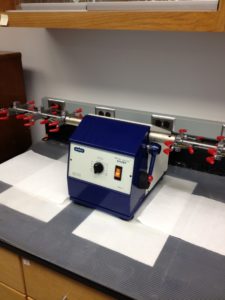The Transition
Going from being an undergraduate student only working 6 hours a week on my own independent project to being a full time worker in the Bee Research Lab has been quite a transition. During the semester, a few other undergraduate students and I worked on an independent research project counting individual nosema spores in an attempt to figure out if counting individual spores was more accurate for identifying disease or infection of bees than the traditional 100 bee nosema spore count. Now that I work full time for the lab, I see just how small of a project that really was.


Almost every day our lab receives samples of honey bees from around the country in small bottles filled with ethanol. This constant influx of samples keeps the lab busy, as there are often 50 or more samples that need to be processed at a time, and a restraint from the Varroa shaker only being able to shake 12 samples maximum at a time. At first, I was just a mindless drone that would process and record the varroa data and put bags with 100 bees in the fridge for Rachel to check later. However I soon grew to understand the process more and more, and can now properly record any incoming sample by myself and also accurately check for Nosema spores. Surprisingly, the back-up of work does not come from the restraint of the Varroa shaker, but the time consumption of checking the samples for Nosema spores. Even with Rachel and I working vigorously together to count the Nosema spores, we just can’t keep up with how fast the samples fly off of the Varroa shaker. Despite the seemingly endless supply of samples, we as a team were able to get all of the samples processed and reports written up before July 4th! It feels pretty good to know that there are only a few National Honey Bee Survey samples waiting for us so far next week.


Another surprise was that our labs (well mainly Dennis) were recorded by a Japanese television company! It’s pretty cool to think that I might be on television in a honey bee sample feature! Despite this awesome surprise (after all, how many labs are featured on television shows?) I was also surprised to learn that I was going to have to take a 3-4 hour online training certification. The test was long and grueling (lots of law jargon and confusing vocabulary), but I passed! Taking that test made me feel like I was taking an exam for a class, but if I failed this test I’m not quite sure what would happen to me in the lab, since I kind of need the certification to be able to work there. Luckily, I don’t have to worry about that!
As you can probably tell, I am enjoying my summer and my job with the Bee Research Lab, and am looking forward to the rest of the productive summer! Stay posted for another blog in just a few weeks!